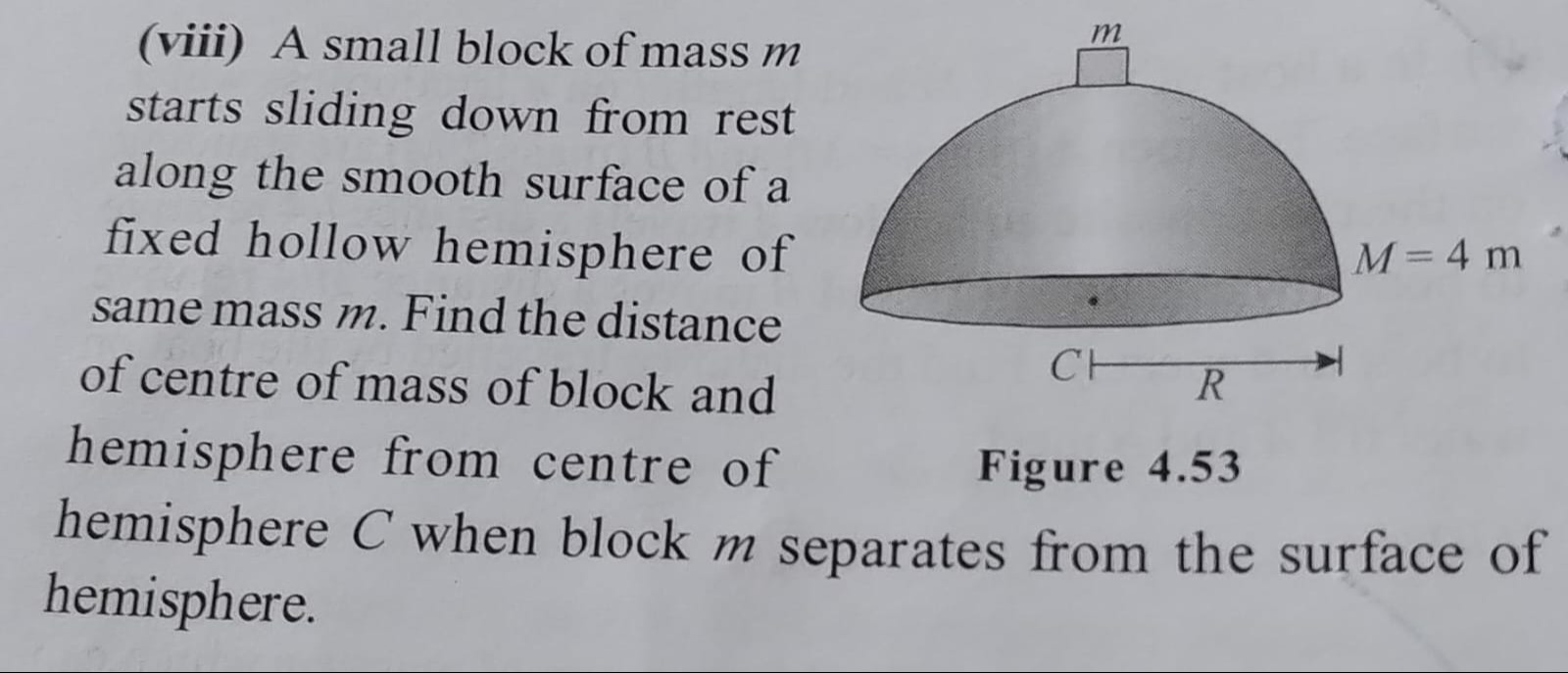Question
Question: A small block of mass *m* starts sliding down from rest along the smooth surface of a fixed hollow h...
A small block of mass m starts sliding down from rest along the smooth surface of a fixed hollow hemisphere of same mass m. Find the distance of centre of mass of block and hemisphere from centre of hemisphere C when block m separates from the surface of hemisphere.

The distance of the centre of mass of the block and hemisphere from the centre of hemisphere C is 15R69.
The distance of the centre of mass of the block and hemisphere from the centre of hemisphere C is 15R5.
The distance of the centre of mass of the block and hemisphere from the centre of hemisphere C is 158R.
The distance of the centre of mass of the block and hemisphere from the centre of hemisphere C is 5R69.
The distance of the centre of mass of the block and hemisphere from the centre of hemisphere C is 15R69.
Solution
-
Condition for Separation: The block separates from the hemisphere when the normal reaction force N becomes zero. At this point, the radial component of gravity provides the centripetal force: mgcosθ=mRv2.
-
Energy Conservation: The block starts from rest at height R. Using conservation of mechanical energy, the kinetic energy v2 at an angle θ is related to the initial state: mgR=21mv2+mg(Rcosθ), which simplifies to v2=2gR(1−cosθ).
-
Solving for θ: Substituting the expression for v2 into the separation condition: mgcosθ=mR2gR(1−cosθ). This yields cosθ=2/3.
-
Block's Position: At the point of separation, the coordinates of the block relative to the center of the hemisphere C are: yblock=Rcosθ=R(32)=32R xblock=Rsinθ=R1−cos2θ=R1−(32)2=3R5
-
Hemisphere's Center of Mass: The center of mass of a hollow hemisphere of radius R is located at a distance R/2 from its center along the axis of symmetry. Assuming the axis of symmetry is vertical, its coordinates are (0,R/2). The mass of the hemisphere is given as M=4m from the figure.
-
System's Center of Mass: The total mass of the system (block + hemisphere) is mtotal=m+M=m+4m=5m. The coordinates of the center of mass (XCM,YCM) are: XCM=mtotalm⋅xblock+M⋅xhemisphere=5mm(3R5)+4m(0)=15R5 YCM=mtotalm⋅yblock+M⋅yhemisphere=5mm(32R)+4m(2R)=5m32mR+2mR=158R
-
Distance from C: The distance of the system's center of mass from C is: d=XCM2+YCM2=(15R5)2+(158R)2=2255R2+22564R2=22569R2=15R69.
